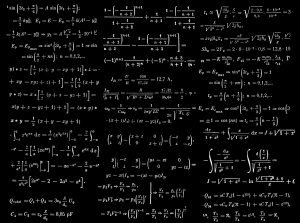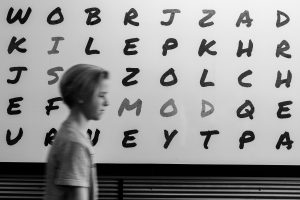How to Incorporate Mental Math into School Curriculums

As a parent, you want the best for your child’s education, especially when it comes to mathematics. But sometimes, helping them understand complex concepts and formulas can be a challenging task. What if there was a way to make math more engaging, fun, and accessible for your child? The answer lies in incorporating mental math into their school curriculum.
Mental math is a powerful tool that can enhance your child’s cognitive skills, problem-solving abilities, and overall academic performance. By mastering mental math techniques, children can develop a strong foundation in mathematics that will benefit them throughout their educational journey and beyond. In this article, we will explore various strategies to effectively integrate mental math into school curriculums, including multiplication tables, addition and subtraction, and solving math problems.
Mental Math Warm-Ups
Mental Math Warm-Ups are an excellent way to start each math class. These quick exercises engage students from the beginning of the lesson and reinforce important concepts. Here are some strategies for incorporating Mental Math Warm-Ups into your child’s school curriculum:
-
Start with Multiplication Tables: Begin each class with a quick multiplication table exercise. Have students recite the tables aloud or write them down. This activity not only reinforces multiplication skills but also improves memory and mental agility.
-
Addition and Subtraction Challenges: Designate a few minutes at the beginning of each class for addition and subtraction challenges. Give students a set of numbers and ask them to mentally calculate the sum or difference. Gradually increase the complexity of the challenges to keep students engaged and motivated.
-
Math Fact Review: Use flashcards or interactive games to review math facts such as number bonds, doubles, or halves. Encourage students to solve these math problems mentally, which helps improve calculation speed and accuracy.
Interactive Games and Activities
Using interactive games and activities is a fantastic way to make math learning fun for children. It promotes active participation, fosters a positive learning environment, and develops problem-solving skills. Here are some examples of interactive games and activities that can be incorporated into your child’s school curriculum:
-
Math Bingo: Create bingo cards with math problems instead of numbers. Students solve the problems mentally and mark the corresponding answers on their cards. This game helps improve mental calculation speed while making math enjoyable.
-
24 Game: The 24 Game is a popular card game that challenges students to use addition, subtraction, multiplication, and division to reach a target number of 24. Playing this game regularly sharpens mental math skills and enhances critical thinking abilities.
-
Math Jeopardy: Adapt the traditional Jeopardy game to focus on math topics. Divide students into teams and let them compete by answering math-related questions. This interactive activity injects excitement into the learning process while reinforcing math concepts.
Real-Life Applications
Making math relevant and practical is key to engaging students in the subject. By integrating mental math into real-world scenarios, such as budgeting, cooking, or travel planning, students can see the practical applications of what they learn in class. Here’s how you can incorporate real-life applications into your child’s school curriculum:
-
Budgeting Activities: Assign students a budgeting project where they have to plan a hypothetical family budget. They need to calculate expenses and savings and make decisions based on their allocated funds. This activity not only enhances mental math skills but also teaches financial literacy.
-
Cooking Conversions: Cooking involves precise measurements and conversions. Incorporate mental math by asking students to convert measurements from one unit to another or adjust ingredient quantities for a given number of servings. This activity develops estimation skills and reinforces mathematical concepts.
-
Travel Planning: Engage students in travel planning activities where they have to calculate distances, time zones, and currency exchange rates. By using mental math skills, students can plan their itinerary, calculate expenses, and solve real-world problems.
Table: Strategies for Incorporating Mental Math into School Curriculums
|
Strategy |
Description |
Impact |
|---|---|---|
|
Mental Math Warm-Ups |
Begin classes with quick mental math exercises. |
Enhances focus and concentration. |
|
Interactive Games and Activities |
Use games to make learning fun and interactive. |
Encourages participation and problem-solving skills. |
|
Real-Life Applications |
Integrate mental math into real-world scenarios. |
Makes math relevant and practical. |
|
Peer-to-Peer Discussions |
Encourage students to share strategies and solutions. |
Promotes critical thinking and collaboration. |
|
Consistent Practice |
Incorporate daily or weekly mental math drills. |
Develops numerical fluency and boosts confidence. |
Peer-to-Peer Discussions
Encouraging students to participate in peer-to-peer discussions during mental math exercises can significantly enhance their problem-solving abilities. Here’s how you can foster peer-to-peer discussions in your child’s school curriculum:
-
Problem-Solving Groups: Divide students into small groups and provide them with challenging math problems. Encourage them to work together to find different strategies and solutions. This collaborative approach promotes critical thinking, collaboration, and diverse problem-solving approaches.
-
Solution Sharing: After completing a mental math exercise, ask students to share their strategies and solutions with the class. This not only boosts confidence but also exposes students to different problem-solving methods. It encourages creative thinking and expands their mathematical knowledge.
Consistent Practice
Consistency is key when it comes to developing strong mental math skills. Incorporate daily or weekly mental math drills into your child’s school curriculum to reinforce their skills consistently. Here are some tips for consistent practice:
-
Timed Drills: Set aside a specific time for timed mental math drills each day or week. Provide students with a set of math problems and ask them to solve as many as they can within a given time limit. This exercise improves numerical fluency, boosts confidence, and enhances mental calculation speed.
-
Game-Based Practice: Use online math games or apps that offer mental math practice. These interactive tools make practice more enjoyable and engaging for students. Monitor their progress and celebrate their achievements to motivate them further.
Summing Up
Incorporating mental math into school curriculums is an effective way to boost your child’s math skills, enhance cognitive abilities, and improve overall academic performance. By integrating Mental Math Warm-Ups, interactive games and activities, real-life applications, peer-to-peer discussions, and consistent practice, you can create a comprehensive and engaging learning environment for your child.
Remember, each child learns at their own pace, so be patient and supportive throughout their mathematical journey. Consider enrolling your child in a reputable program that specializes in mental math, such as SIP Abacus. SIP Abacus India offers world-class skill development programs that unlock the mental potential of children through fun learning methodologies. Their programs focus on developing skills in mathematics and overall growth.
With the right tools, guidance, and consistent practice, your child can become a confident problem solver, equipped with strong mental math skills that will benefit them not only in mathematics but also in various aspects of life. Start incorporating mental math into your child’s school curriculum today and witness their mathematical abilities flourish.



